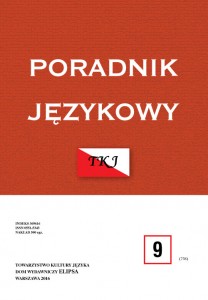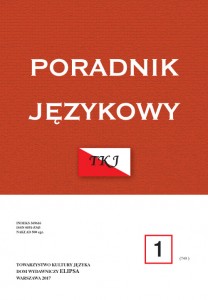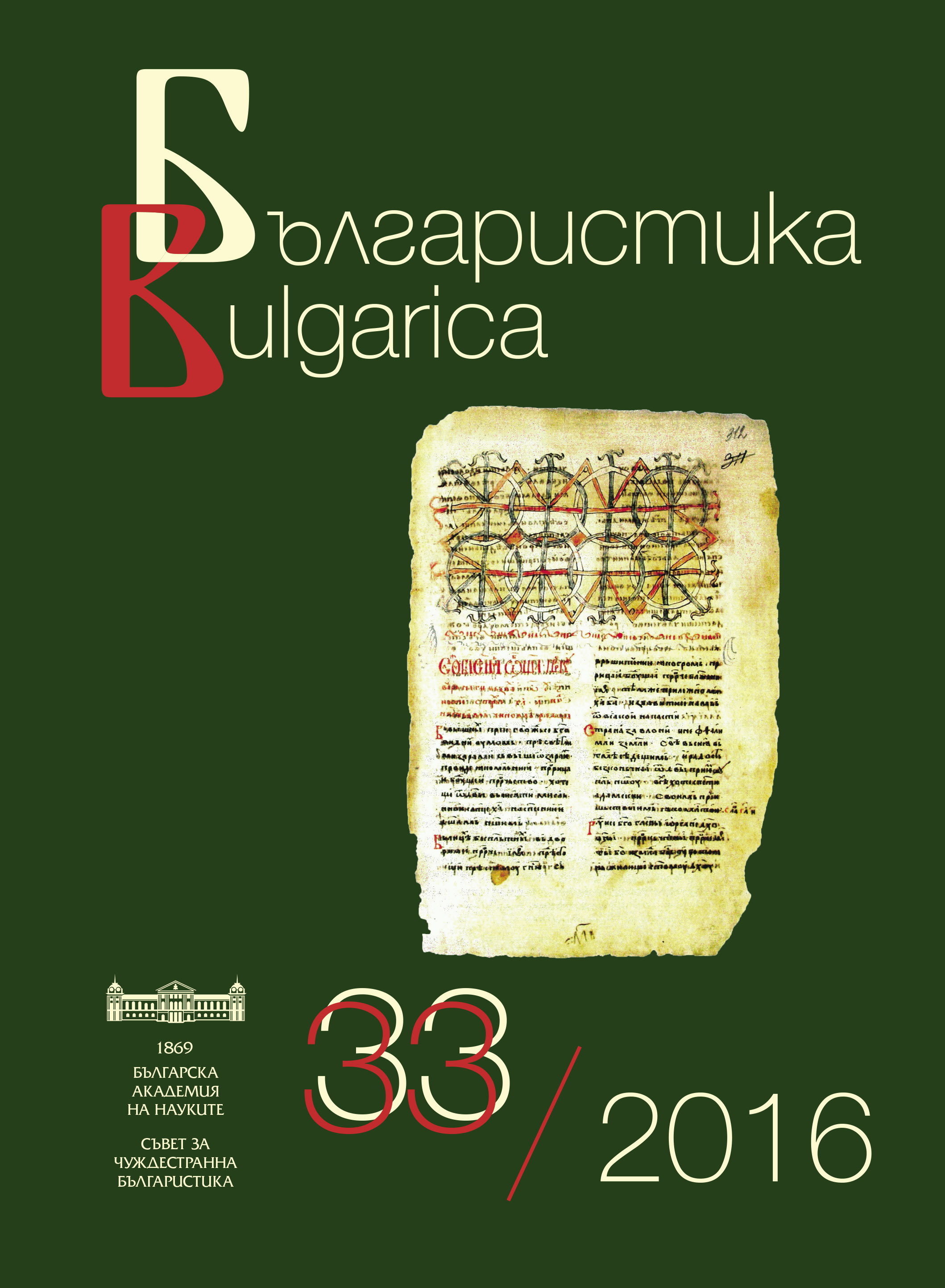
We kindly inform you that, as long as the subject affiliation of our 300.000+ articles is in progress, you might get unsufficient or no results on your third level or second level search. In this case, please broaden your search criteria.

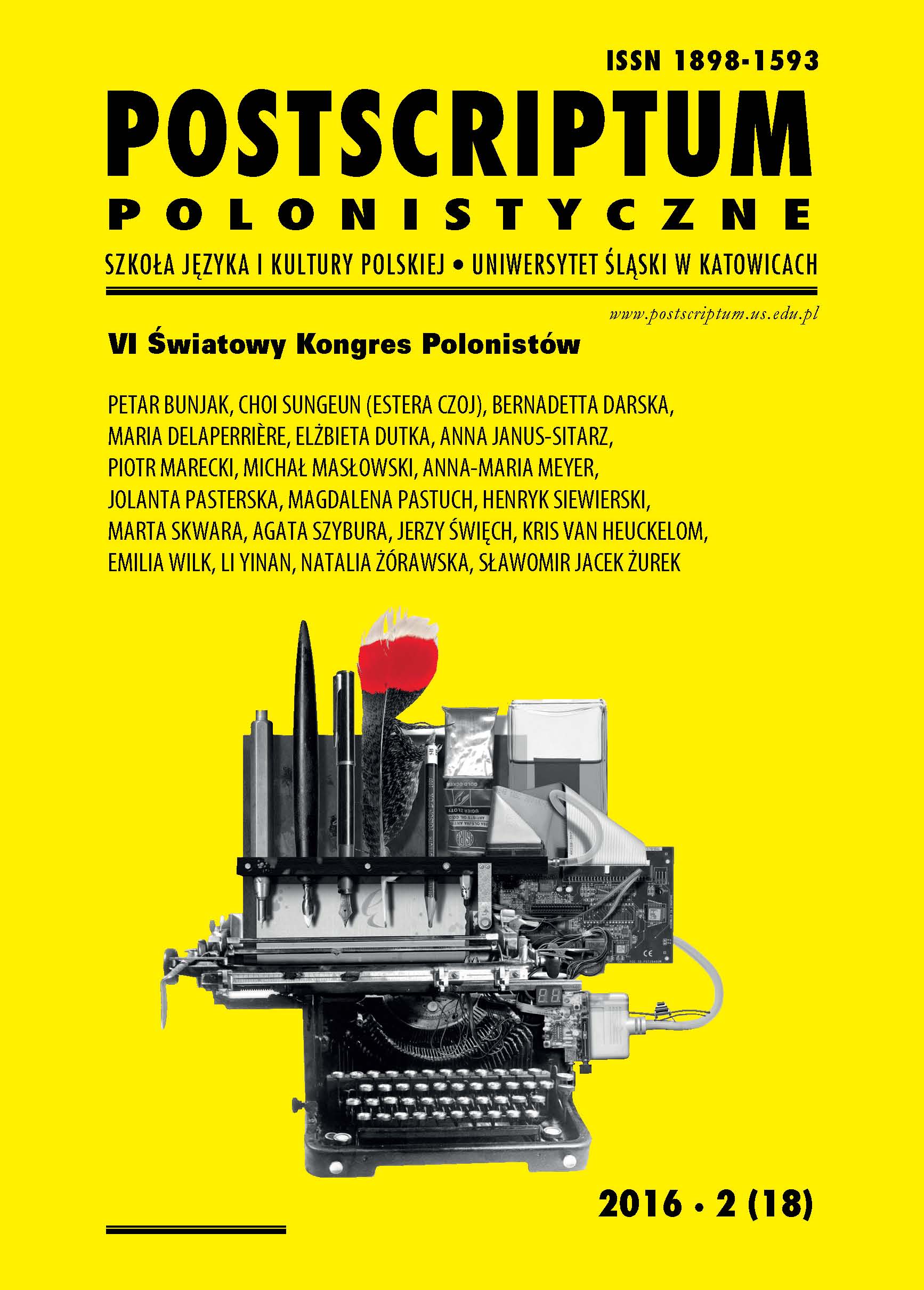
The article aims at creating a schema that can be used to structure Polonistic linguistic research. The author suggests basic categories, such as METHODOLOGY and METHOD, SUBJECT and SOURCES. Each category, though derived from a different area has specific and relevant information. Each research project described according to such categories would be clearly depicted and placed in an appropriate position within Polonistic linguistics.
More...
There are a wide range of minority languages in Poland – including such languages as Karaite, Lemko and Romani. Polish and international linguists have been studying such minority languages and their relationship with Polish recently, but a lot remains to be done. Such languages are extremely valuable and they must be regarded by the Polonistic linguists as of importance. The article discusses in particular the case of the Romani language. The specifics of the relationship between Polish and Romani languages are discussed in comparison with the relationship between Polish and other languages in Poland.
More...
The article looks into the changing on-screen treatment of Polish immigrant characters living on ‘the Paris pavement’. The corpus of film productions under discussion includes Roman Polański’s “The Tenant” (1976), Peter Kassovitz’s “Mariage blanc” (1986), Costa Gavras’s “La petite apocalypse” (1993), Krzysztof Kieślowski’s “Trois couleurs: Blanc” (1994), Paweł Pawlikowski’s “The Woman in the Fifth” (2011) and Małgorzata Szumowska’s “Elles” (2011). As a comparative analysis of the films involved indicates, both the immigrant characters and the urban space associated with them are subject to gradual changes (although some remarkable spatial motifs, such as the balcony and the roof, make their appearance both in the older and the newer productions). If the earlier films tend to focus on the – often geopolitically connoted – marginalization and degradation of male (anti)heroes in the city’s historical center (or its immediate vicinity), then the more recent films shift focus to the urban periphery, where the Polish characters become part of what Dina Iordanova has called the ‘metropolitan multicultural margins’, along with other, economically underprivileged newcomers from various parts of the (postcolonial and post-Communist) world.
More...
The article aims at describing the genocide that happened in Cambodia. It takes into consideration its specific character and focuses on what occurred there. During the Khmer Rouge’s dictatorship not only were hundreds of thousands of people murdered (about 2.5 million victims according to different sources), but also negative symbols became connected with objects of everyday use. Such objects have become a source of memories about events which were final, inevitable and traumatic.
More...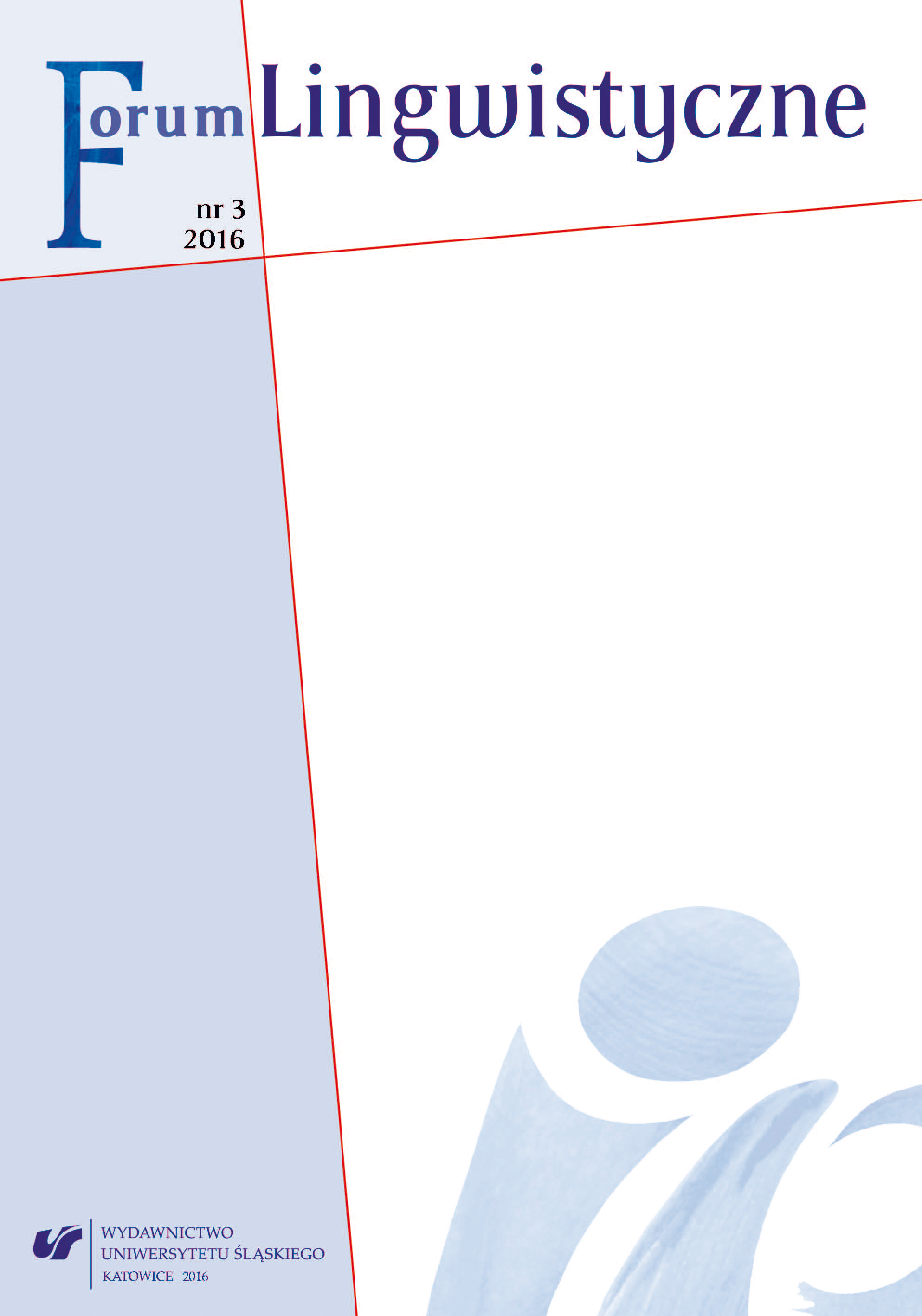
In his article, Waldemar Czachur makes an attempt of analysing the Reconciliation Letter of the Polish Bishops to their German Brothers of 1965 in terms of strategies aimed at building balance in international relations. The section which outlines the historical background of the letter and its political significance for Poland and the Polish-German relations is followed by linguistic analysis of subsequent parts of the letter to look at various balancing strategies between appreciating oneself and the recipient and protecting oneself and the recipient in the spirit of Goffman’s ritual equilibrium.
More...
The article examines job and professional training advertisements published in Krakow in the daily newspaper “Czas” between 1850 and 1890. The analysed material includes both: job offers and announcements of job seekers. In the education section of the newspaper the advertisements are published by schools, enterprises, teachers’ institutions and individuals ready to accept pupils for apprenticeship programs. The analysis covers the persuasive vocabulary (the role of the name of the advertiser, most common adjectives and adverbs evaluating the service), genre of the advertisement (announcement, request, letter, and all sorts of hybrid forms) as well as the grammatical level of the analysed texts (persuasive aspect of compound sentences). The analysis of the material leads to the conclusion that the advertisements published in the “Czas” newspaper between 1850 and 1890 rarely realise the persuasive function only. Their persuasive role was realised through the selection of vocabulary and genre as well as by modifying and combining features of various genres.
More...
The author Danuta Pluta-Wojciechowska presents certain reflections on the methods of sound elicitation. She offers the linguistic analysis, as well as, the analysis from the point of view of speech therapy of the synthetic method of sound learning providing, at same time, the example of therapy where professionals dealt with case of dental affricative sound. In the following section of the text, the relevance of linguistic knowledge and the theory of speech therapy in the course of planning the providing speech treatment was stressed.
More...
This article describes polish political discourse on TV. The author considers four parameters of discourse’s general organization. They are: (1) profiling of discourse’s community, (2) generic conventions, which are preponderant on TV and typical in political discourse, (3) primary classes of discourse’s participants, (4) relationship: the discourse world and reality.
More...
The linguistic literature (Buhler, Jakobson) mostly mentions six functions of language, paying little attention to the identifying function. Following the assumption that language is not an ‘ordinaty’ element of culture, but is its main basis, we believe that it has more and less stable elements, whose functions are arranged hierarchically.The identifying function has medium stability, is historically variable and becomes particularly important during intensive political changes or (nationalistic) conflicts. An example might be the recent split of Serbo-Croatian into tree languages. The identifying function is always connected with evaluation, which often exaggerates the positive character of a group and its language. Other groups and other languages can be perceived as worse. The identifying function is realized both individually (it can be identified with the expressive function of an individual then) and in a group. In this role it is often used or even abused in modern culture and especially politics. Instead of synonyms and periphrastic expressions we suggest that Polish linguists should make use of the term identifying function of language defined as a nationally or internationally protected function (based on cultural, ideological, or – less frequantly – religious elements) which enables a group of people of common aims, beliefs, ideas and interests to create a community.
More...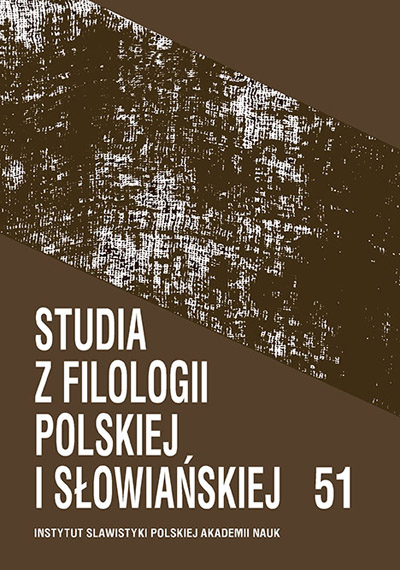
The purpose of this paper is to analyze the contemporary usage of the Polish verb dedykować (to dedicate) and its participle dedykowany (dedicated). During last few years under the influence of English semantics and pragmatics this verb became one of the most popular words in the Polish marketing and IT jargon. The data provided by the National Corpus of Polish enables to state that the contemporary usage of the verb differs significantly from the semantic description published in the dictionaries of Polish. Therefore the scope of this paper is to promote the corpus driven approach to the lexicography. Since the new meaning of the analyzed verb is an English borrowing the paper deals also with the problem of adjusting English morphological patterns to the rules of Slavic verbal inflexion. As it can be observed in the text this grammatical divergence leads in the case of new borrowings to the widely diversified and unstable language usage.
More...
The article concerns the East-Slavic linguistic influence on Polish in the second half of the nineteenh century as exemplified by the meaning of the phrase zbić z pantałyku. Today’s meaning of the phrase is associated with another phraseologism zbić z tropu ‘to throw [lit. knock] off trace,’ which originates from the hunting jargon. *Pantałyk as a separate word is not (and never has been) used in general Polish, and the comprehensibility of the whole phrase is the result of the sum of its components. East Slavic counterparts of the phrase are attested from the midnineteenth century. In the Polish of the period, zbić z pantałyku had a colloquial status, and its usefulness in the sphere of everyday communication was a manifestation of economy of imaginary rather than conceptual means of expression. Especially in the conditions of widespread bilingualism, the new phrase could easily be recognized against the background of contemporary usage of nearsynonymous colloquial phrases derived from the verb zbić ‘to beat’ but also ‘to knock off.’ The greater frequency of zbić z pantałyku in the Polish of southeastern borderlands resulted from a combination of factors, mainly the blurred boundaries between literary and dialectal (folk) phraseology.
More...
The Article concentrates on the findings regarding Slavic influence on Yiddish, described in the newest English-language edition of Max Weinreich’s History of the Yiddish Language – a canonical title for modern Yiddish studies. Its first task is to acquaint Polish readers with M. Weinreich’s propositions and findings on the general character of Polish-Yiddish and Slavic-Yiddish language contact. This will also be taken as an opportunity to briefly review the research on this subject conducted by Polish scholars. Additionally, the article will elaborate (albeit not exhaustively) on the attempts to question and verify M. Weinreich’s theories which may prove interesting from the point of view of Slavic studies. Its second, equally important task is to describe chosen examples of the results of Slavic influence, in which Polish played a significant role, as they present themselves in the lexicon, morphology, word formation and syntax of Yiddish.
More...
The Clarin Eric and Clarin-PL strategic scientific purpose is to support humanistic research in a multicultural and multilingual Europe. Polish researchers put the emphasis on building a bridge between the Polish language and Polish linguistic technologies and other European languages and their linguistic technologies. So far, the Polish scientific community has mainly focused on Polish-English connections. Clarin-PL has been developing the first and only multilingual corpora of the Polish language in conjunction with other Slavic languages and the Lithuanian language: the Polish-Bulgarian-Russian Parallel Corpus and the Polish- Lithuanian Parallel Corpus. The parallel corpora created by the ISS PAS Corpus Linguistics and Semantics Team break through the existing “canons” and allow scientists access to interlinked multilingual language resources – in the first phase limited to the languages of the three Slavic groups and the Lithuanian language. In the article, the authors present very detailed information on their original system of the semantic annotation of scope quantification in multilingual parallel corpora, hitherto unused in the subject literature. Due to the system’s originality, the semantic annotation is carried out manually. Identification of particular values of scope quantification in a sentence and the hereby presented attempts of its recording are supported by long-term research conducted by an international team of linguists and computer scientists / mathematicians developing the issue of quantification of names, time and aspect in natural languages.
More...
The article is a report from an international scientific conference, organised on 20–21 April 2016 in Kiev by the Institute of the Ukrainian Language, National Academy of Sciences of Ukraine. The conference, entitled Мови Європи в стані оновлення, was devoted to innovations in European languages, including especially the Slavic languages.
More...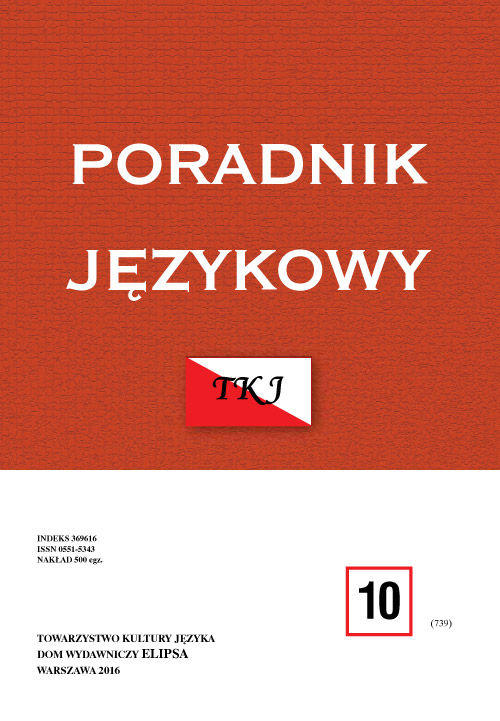
The term heritage language has been functioning in the relevant world literature since the late 1990s. It began to be used in Polish publications somewhat later gradually gaining acceptance in the circles of researchers, teachers and users. Its popularity ensures its broad application in various subdisciplines of linguistics – it is used not only by language educationalists, but also psycho-, ethno-, and sociolinguists. This study outlines the specificity of the notion of heritage language with particular focus on its significance in ethnic education and usefulness when differentiating between natural and cognitive bilingualism, and describing linguistic competences of users, which are largely determined by being part of a given generation of the Polish community abroad.
More...